Our latest temporary exhibit, Science Up Close: Fantastic Fossils, is a special one for the Museum. Rather than leasing a traveling exhibition from a vendor, our exhibits department and paleontology divisions designed and built one from scratch! With more than a hundred fossils, casts and replicas from our collections, including some that had never been on public display before, the exhibition is a fresh, new look at the world of fossils.
The exhibit’s most unique feature is the working lab staffed with researchers from our vertebrate paleontology, invertebrate paleontology and paleobotany collections. The curators, collection managers, students and volunteers in the lab provide visitors a first-person experience of life as a paleontologist. They even join in virtually direct from the field!
It’s not often we get a front-row seat to the entire process of creating an exhibit, and so, we wanted to share a glimpse at what goes into moving fossils, creating a new lab for scientists and building an exhibit.
Take a peek behind the scenes and see some of the work that went into putting together Science Up Close: Fantastic Fossils. Then, come see the finished product in person and uncover the secrets of past life on Earth!
Fantastic Fossils exhibit
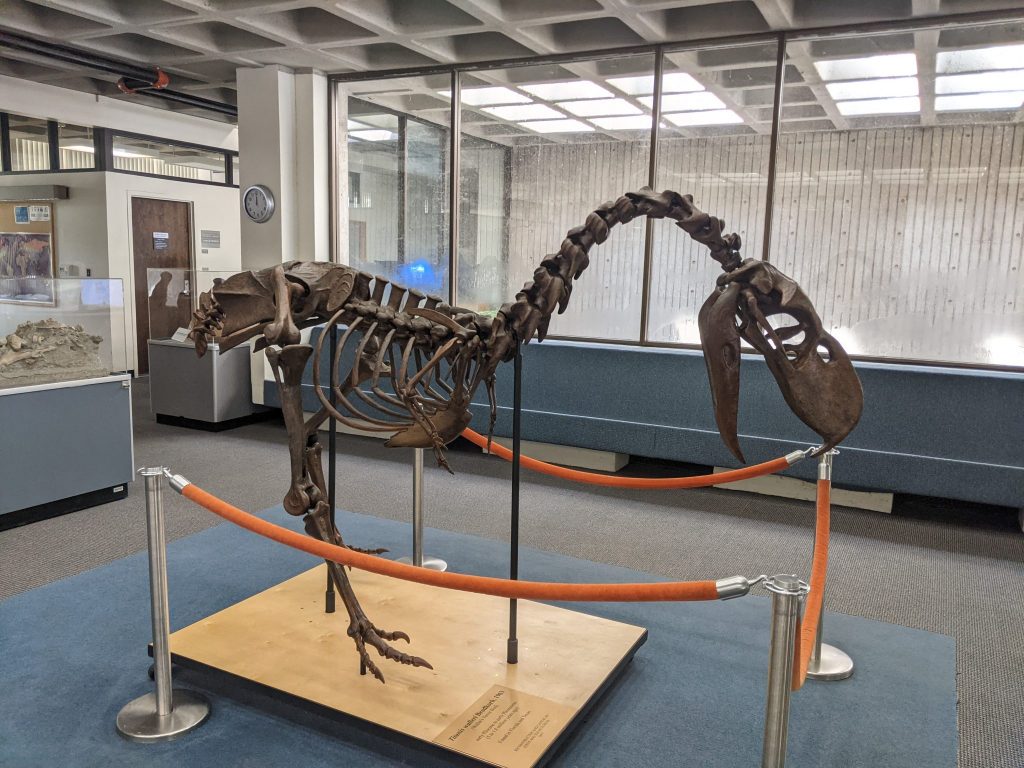
As part of the exhibit, the museum’s iconic terror bird skeleton had to be moved 2 miles across campus from Dickinson Hall over to the exhibit at Powell Hall. A cast of the skeleton is also on display in the Florida Fossils exhibit. ©Florida Museum/Rachel Narducci
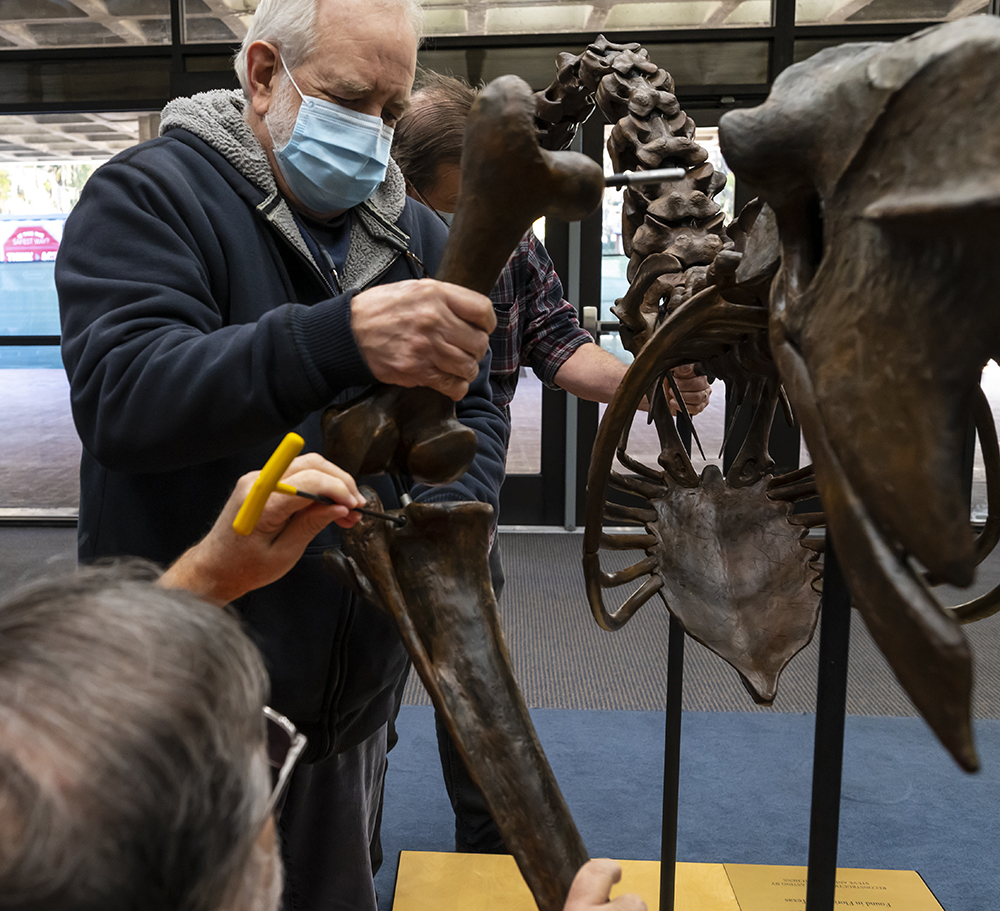
The safest way to transport it was to carefully dismantle the skeleton and take it back to Powell Hall in pieces. Here, staff dismantle the legs and ribs of the terrorbird. ©Florida Museum/Jeff Gage
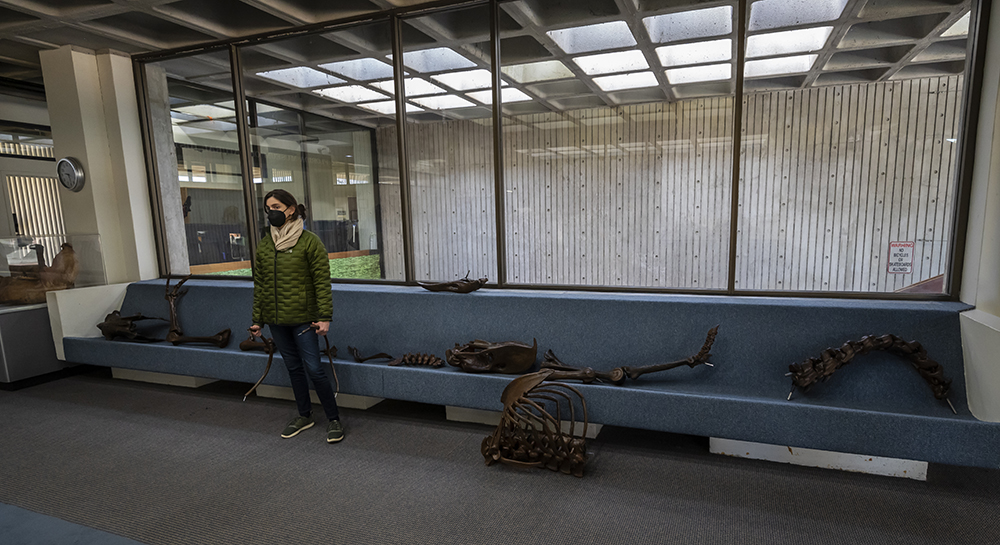
Terror birds look a lot less intimidating when disarticulated. ©Florida Museum/Jeff Gage
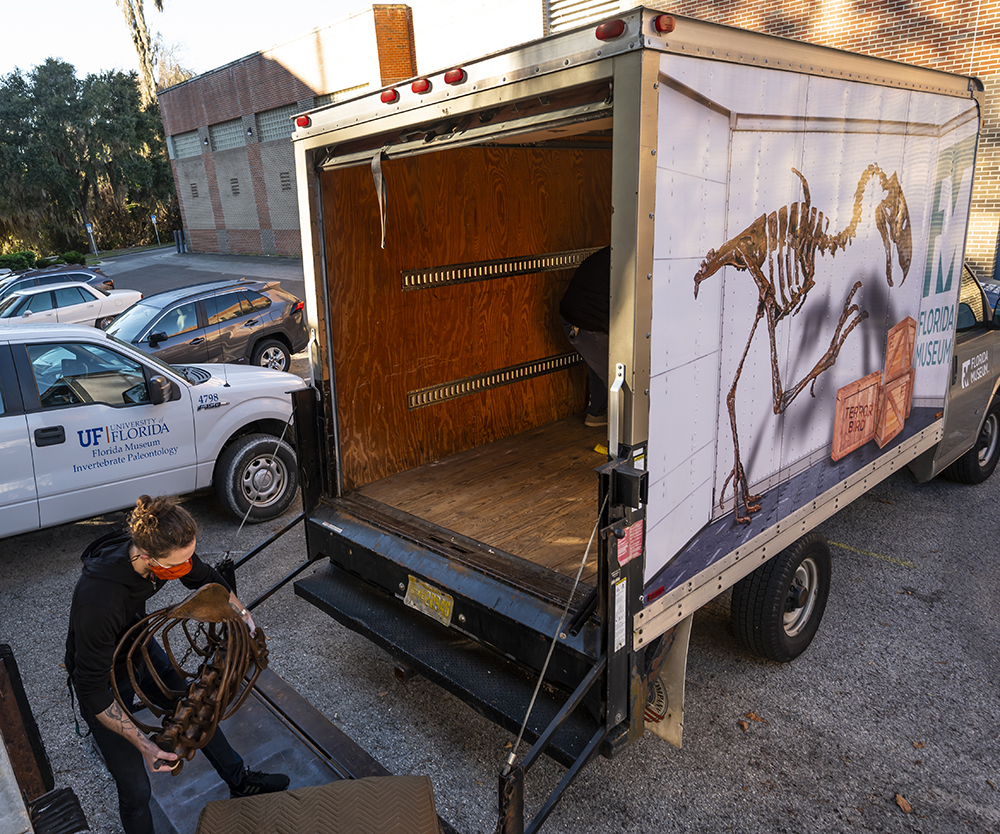
Like most celebrities, the terror bird traveled to the museum in style with its face plastered on the side of the truck. ©Florida Museum/Jeff Gage
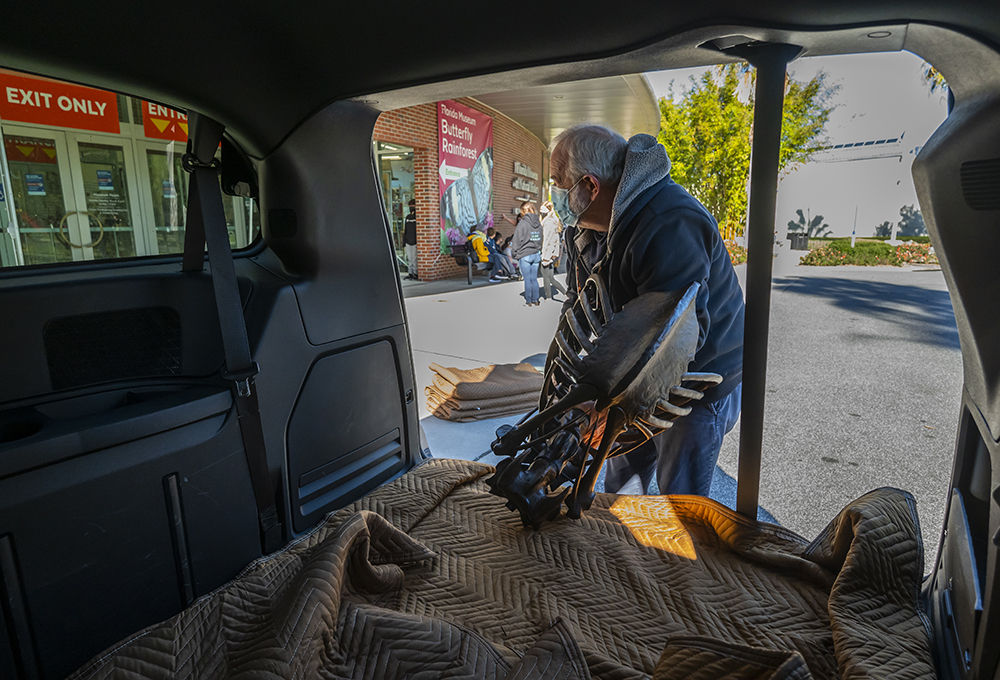
At Powell Hall, the terror bird was unloaded and then rearticulated by paleontologists and exhibits’ staff. ©Florida Museum/Jeff Gage
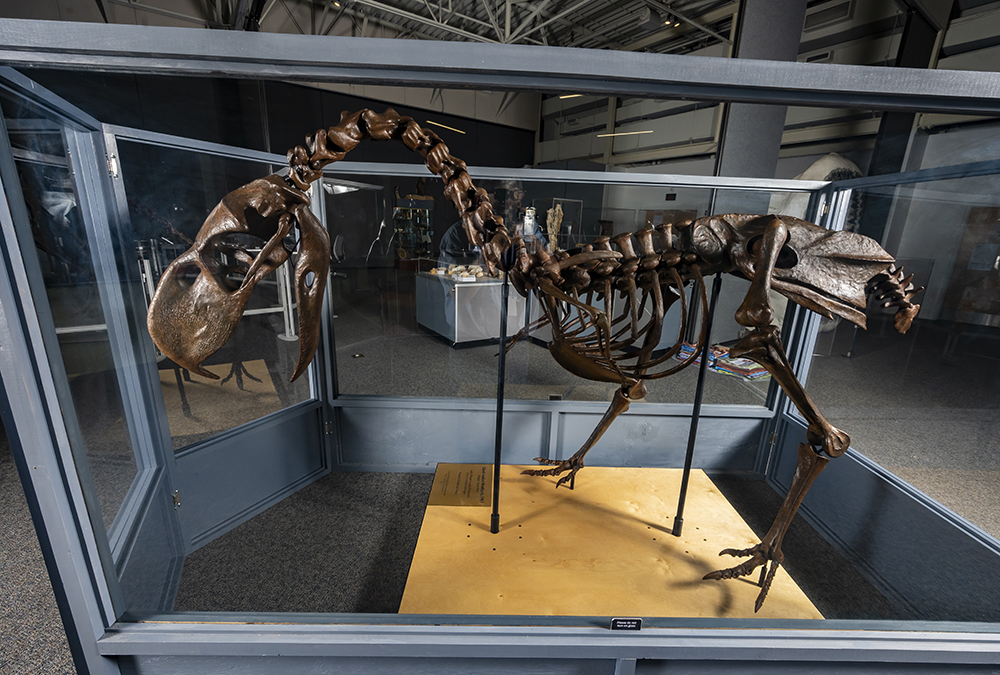
Finally, here it is at its final destination, on display in Fantastic Fossils! ©Florida Museum/Jeff Gage
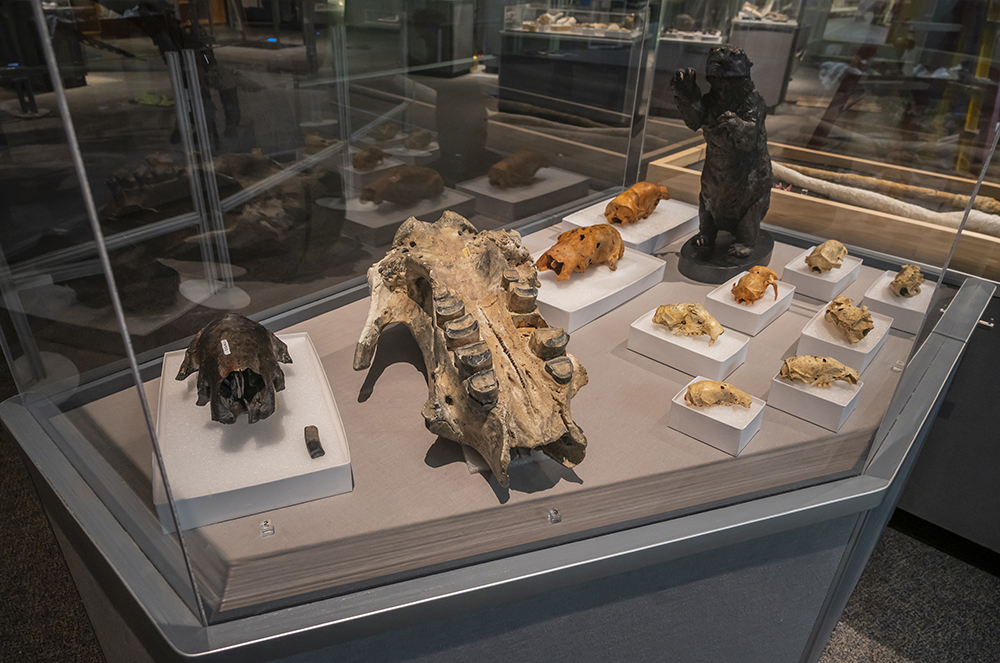
The exhibit has themed sections covering a variety of fossil-related topics, like this display on extinctions and migrations that showcases specimens from the collections of a extinct ground and island sloths. ©Florida Museum/Jeff Gage
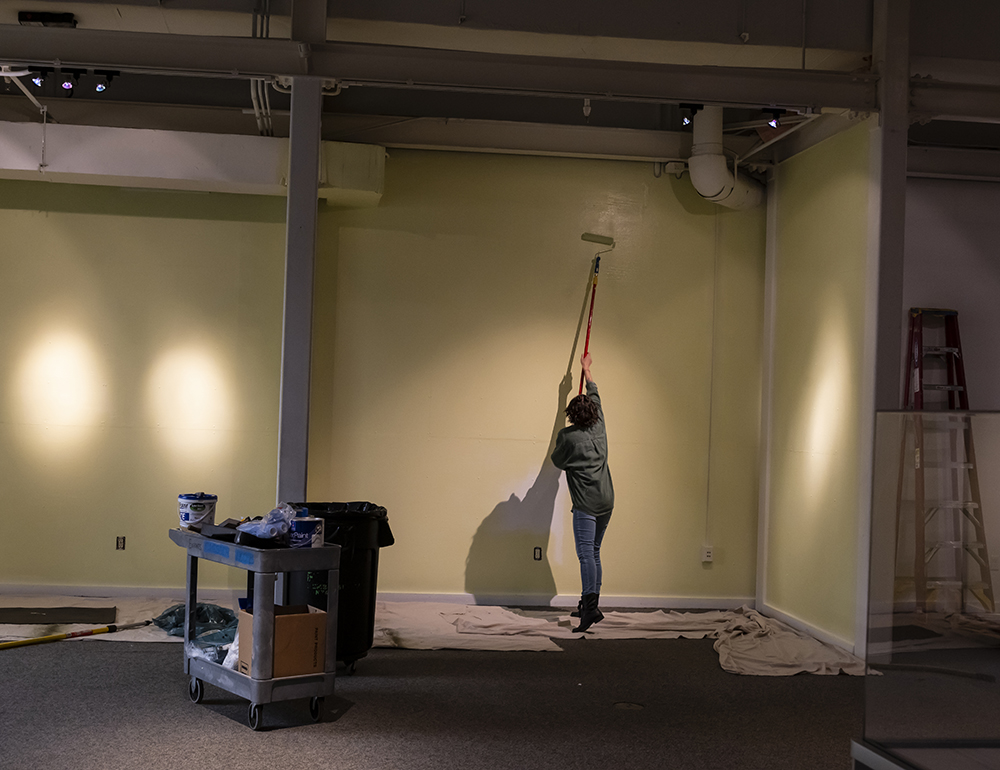
Before the lab could be built, the exhibit space was repainted and had a new floor installed. ©Florida Museum/Jeff Gage
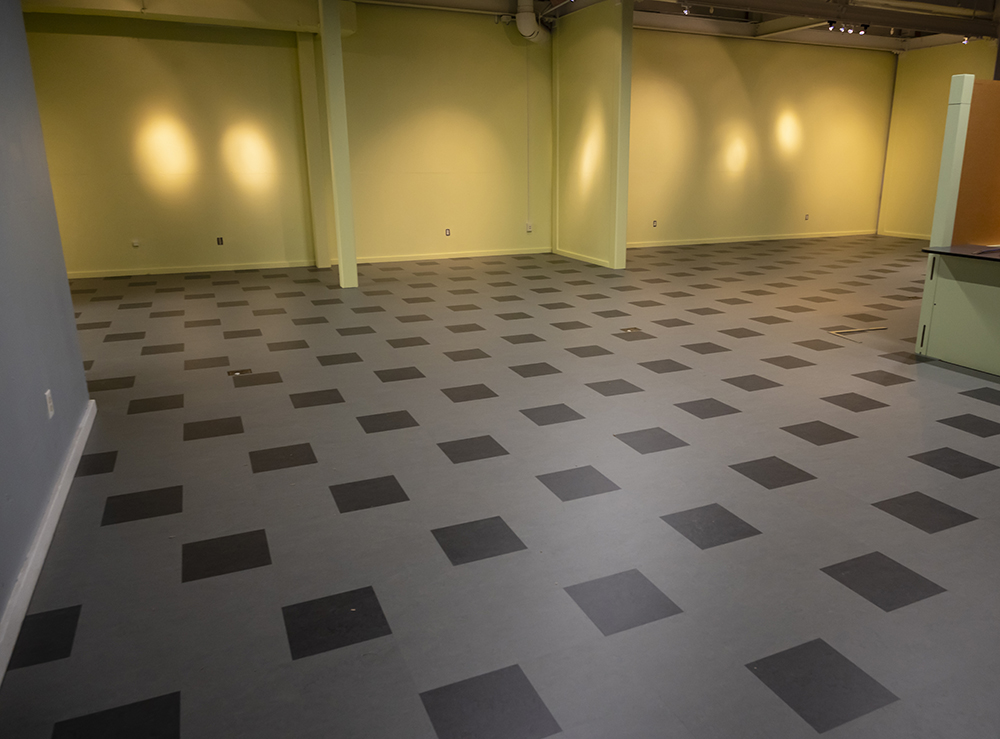
The new and improved working lab area before our paleontologists moved in. ©Florida Museum/Jeff Gage
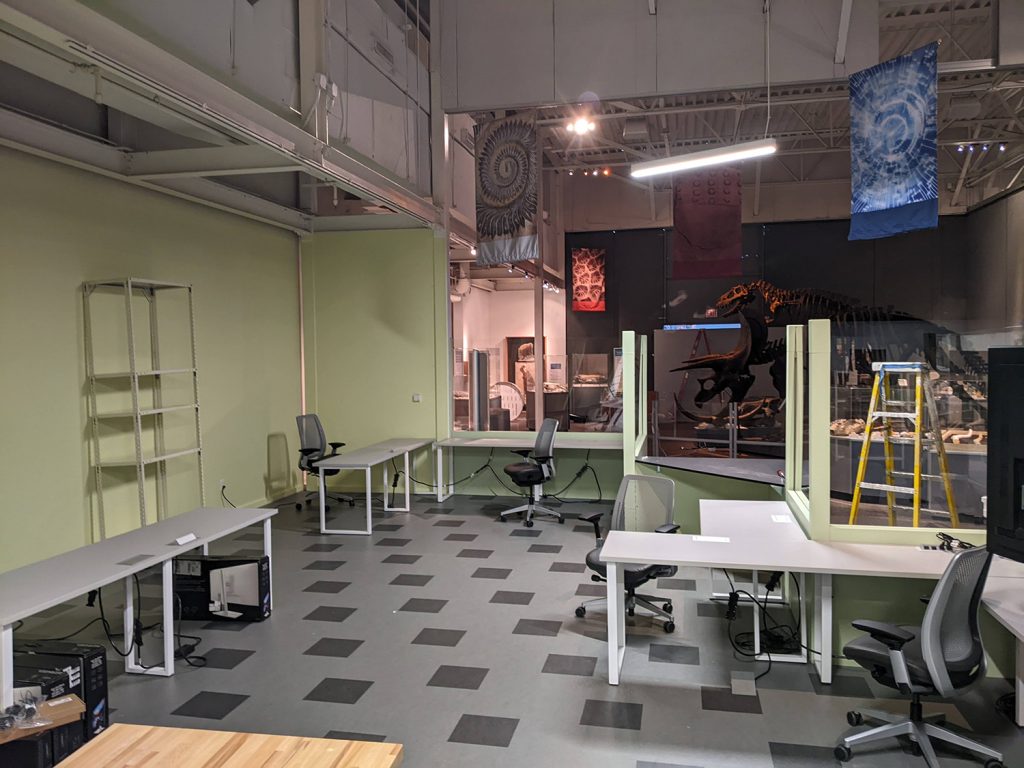
After the floor was installed, the space was transformed into a functional work area so researchers could carry out their regular tasks while still being able to interact with guests. ©Florida Museum/Jonnie Dietz
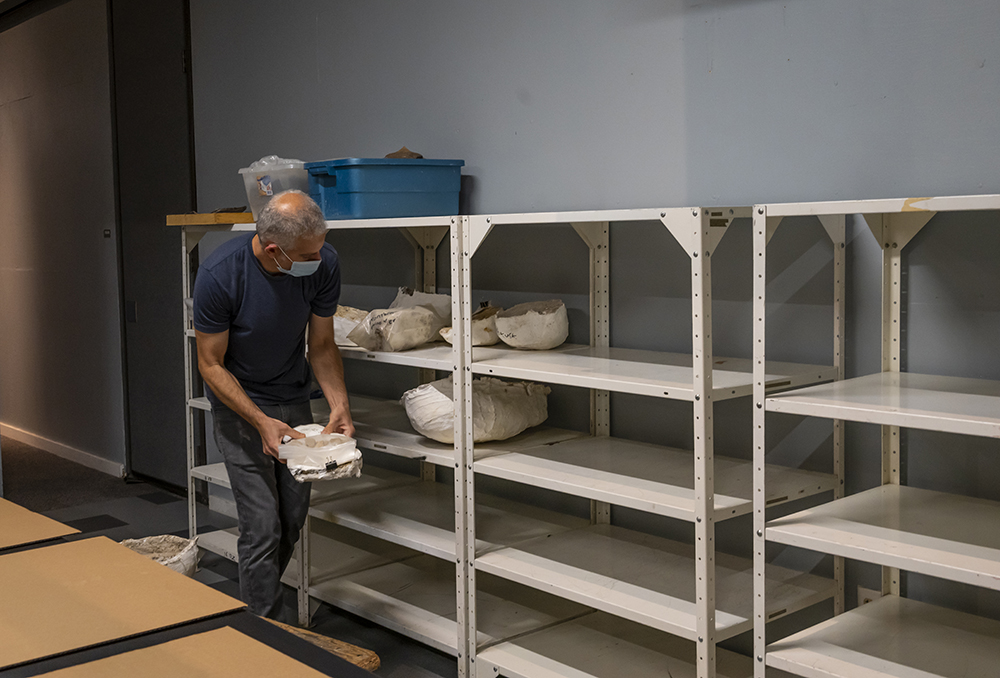
Paleontologists brought over their equipment from the museum’s collections, as well as objects like these plaster jackets, which are used to safely transport fossils from the field. ©Florida Museum/Jeff Gage
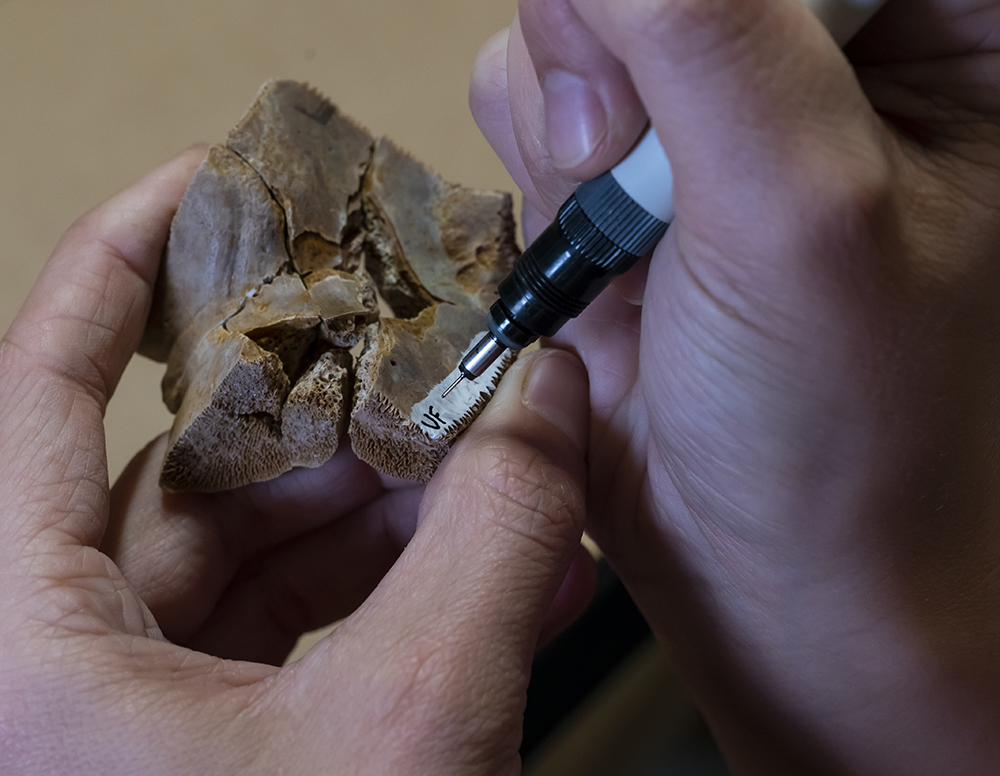
Staff in the working lab carry out tasks like labeling specimens, cleaning fossils and creating digital reconstructions. ©Florida Museum/Jeff Gage
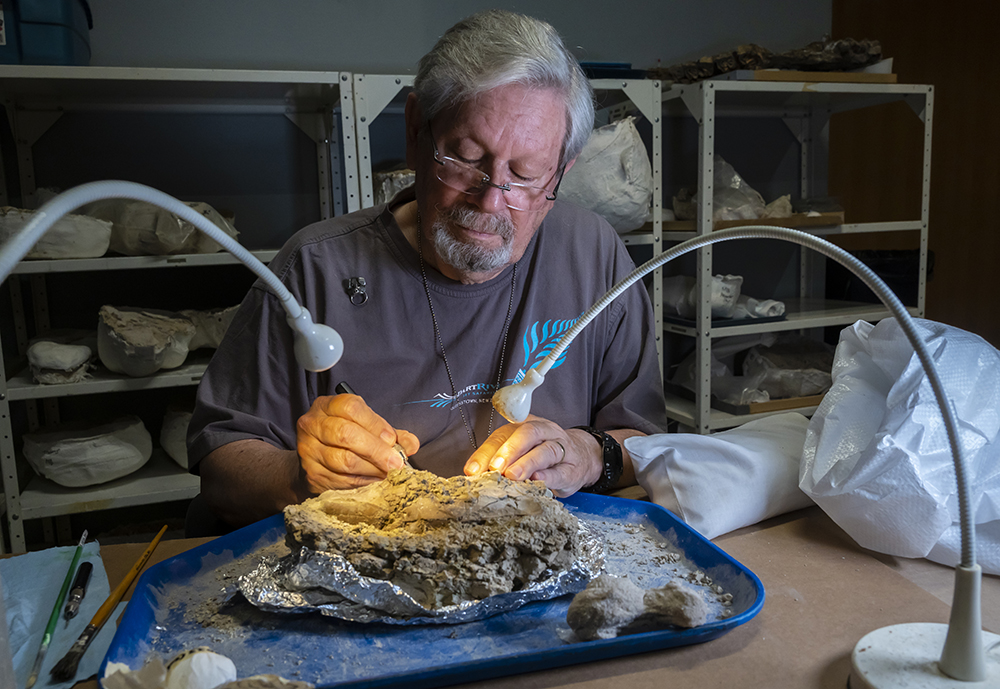
The lab features scientists from the museum’s vertebrate paleontology, invertebrate paleontology and paleobotany collections. ©Florida Museum/Jeff Gage
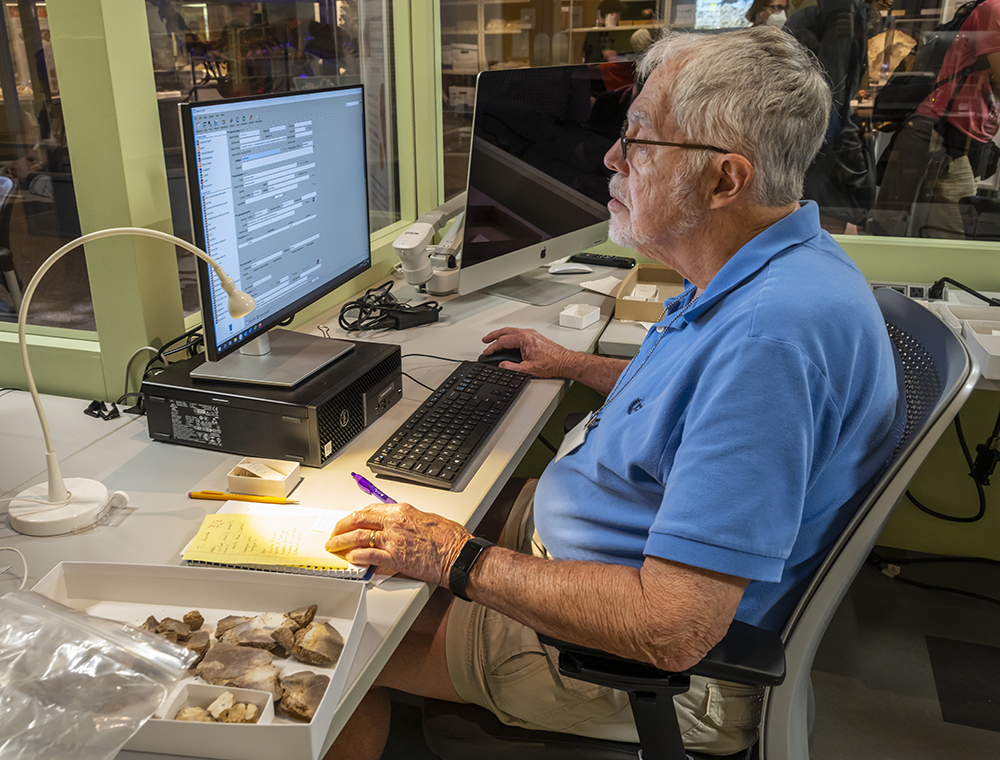
Each scientist in the lab has a unique research interest, so the on-site activities can vary with every visit. ©Florida Museum/Jeff Gage
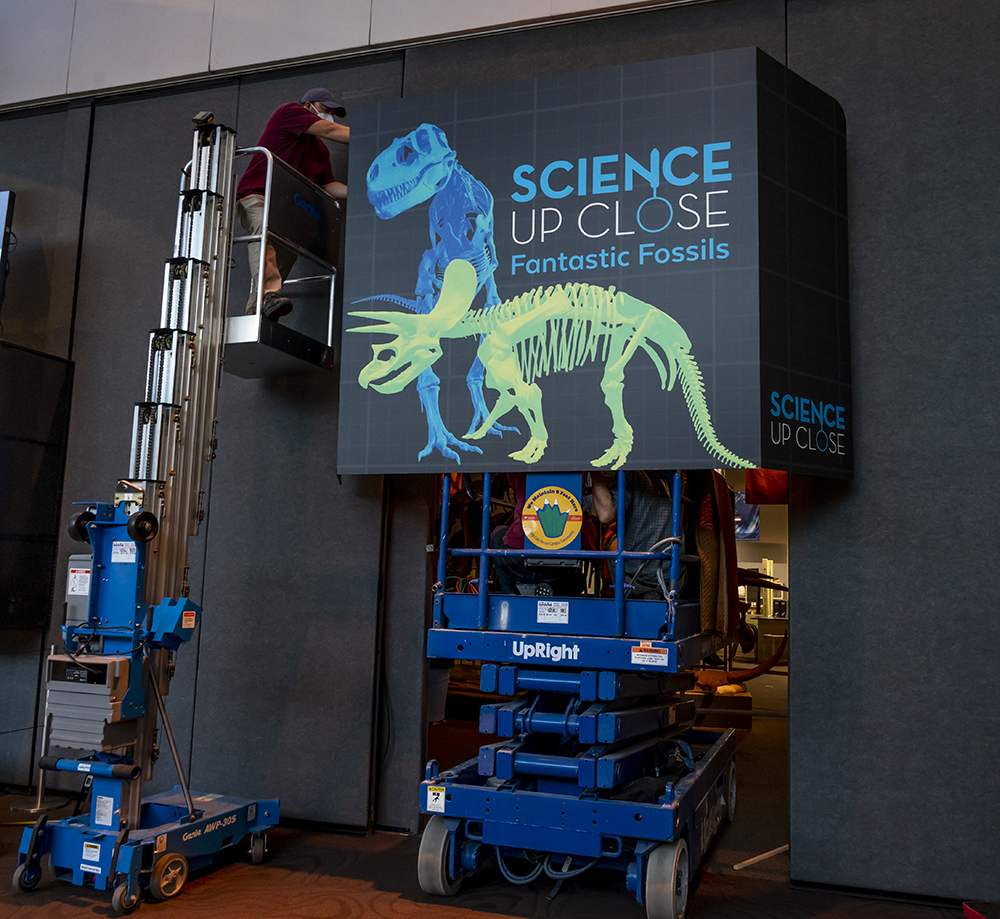
The final step to setting up the exhibit was erecting its sign and putting finishing touches to the entrance. ©Florida Museum/Jeff Gage
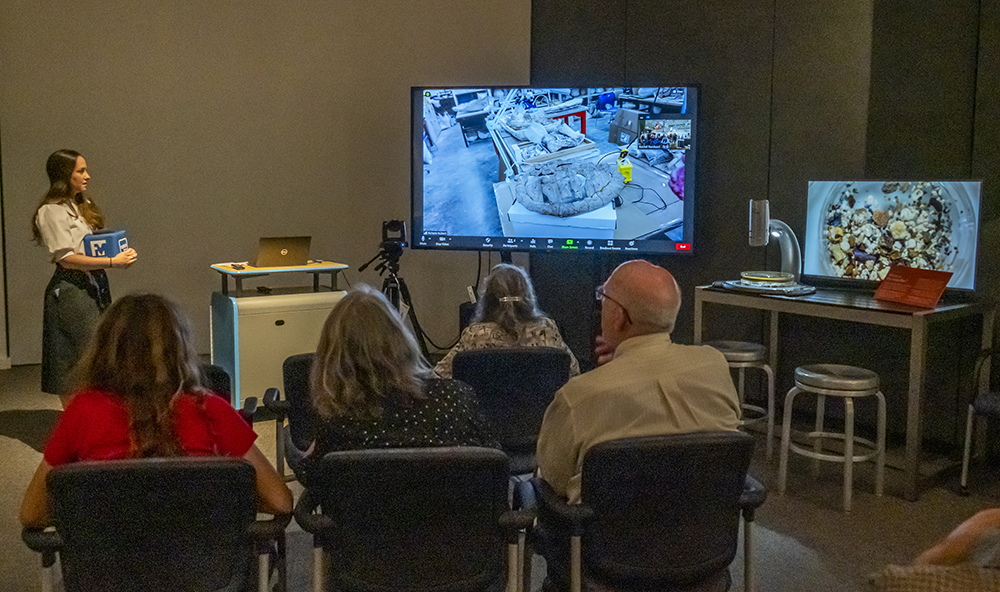
Visitors can talk to scientists joining in virtually from the field or the collections. ©Florida Museum/Jeff Gage
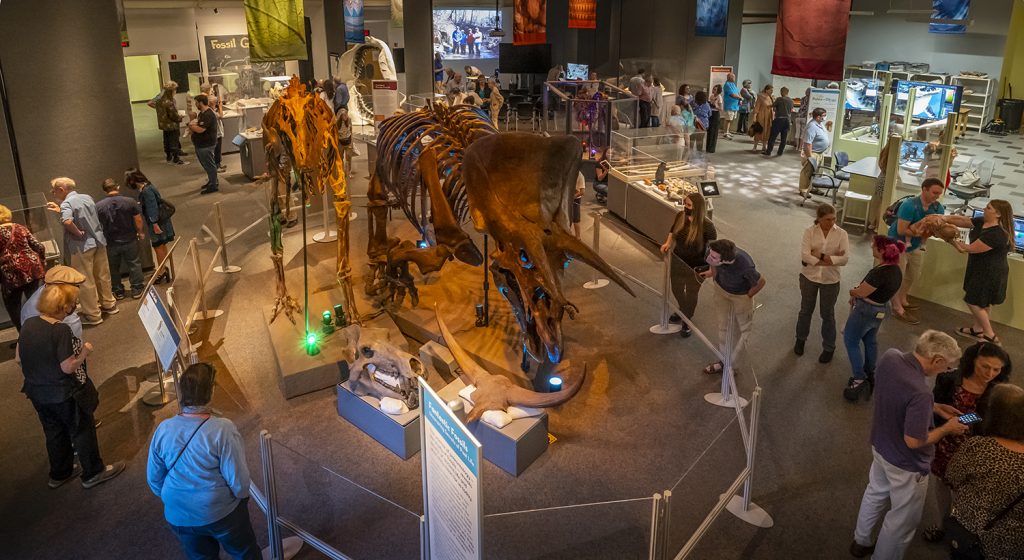
The finished product! Come check out the exhibit 10 a.m.-5 p.m., Monday to Saturday, and 1-5 p.m. on Sunday, last entrance is at 4:30 p.m. daily. ©Florida Museum/Jeff Gage
















